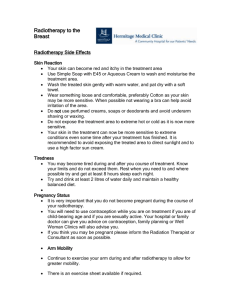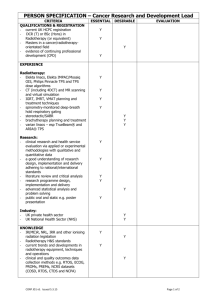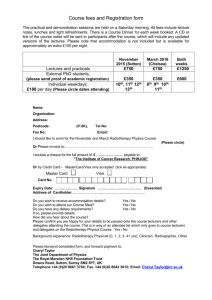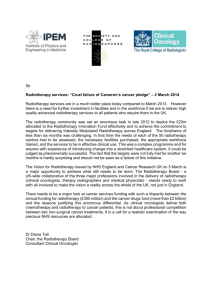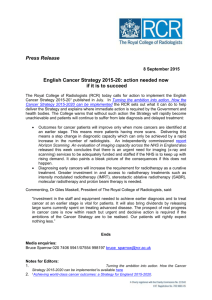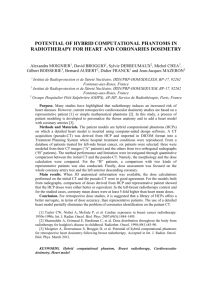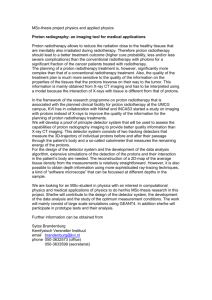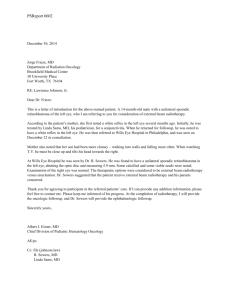Consult 1
advertisement
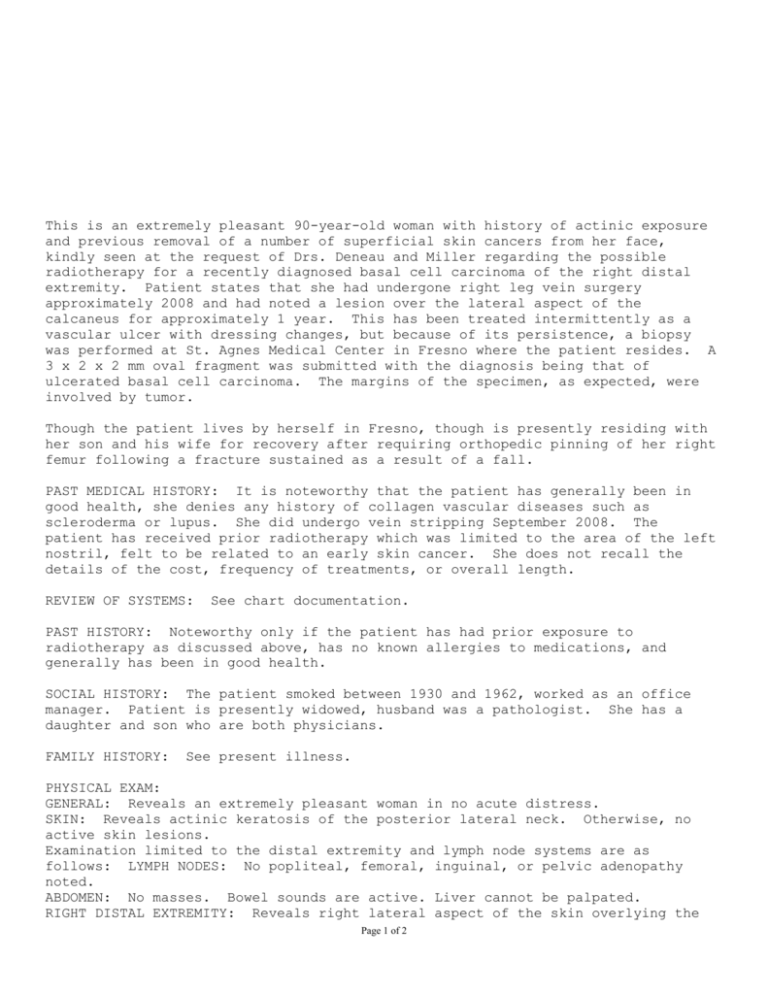
This is an extremely pleasant 90-year-old woman with history of actinic exposure and previous removal of a number of superficial skin cancers from her face, kindly seen at the request of Drs. Deneau and Miller regarding the possible radiotherapy for a recently diagnosed basal cell carcinoma of the right distal extremity. Patient states that she had undergone right leg vein surgery approximately 2008 and had noted a lesion over the lateral aspect of the calcaneus for approximately 1 year. This has been treated intermittently as a vascular ulcer with dressing changes, but because of its persistence, a biopsy was performed at St. Agnes Medical Center in Fresno where the patient resides. A 3 x 2 x 2 mm oval fragment was submitted with the diagnosis being that of ulcerated basal cell carcinoma. The margins of the specimen, as expected, were involved by tumor. Though the patient lives by herself in Fresno, though is presently residing with her son and his wife for recovery after requiring orthopedic pinning of her right femur following a fracture sustained as a result of a fall. PAST MEDICAL HISTORY: It is noteworthy that the patient has generally been in good health, she denies any history of collagen vascular diseases such as scleroderma or lupus. She did undergo vein stripping September 2008. The patient has received prior radiotherapy which was limited to the area of the left nostril, felt to be related to an early skin cancer. She does not recall the details of the cost, frequency of treatments, or overall length. REVIEW OF SYSTEMS: See chart documentation. PAST HISTORY: Noteworthy only if the patient has had prior exposure to radiotherapy as discussed above, has no known allergies to medications, and generally has been in good health. SOCIAL HISTORY: The patient smoked between 1930 and 1962, worked as an office manager. Patient is presently widowed, husband was a pathologist. She has a daughter and son who are both physicians. FAMILY HISTORY: See present illness. PHYSICAL EXAM: GENERAL: Reveals an extremely pleasant woman in no acute distress. SKIN: Reveals actinic keratosis of the posterior lateral neck. Otherwise, no active skin lesions. Examination limited to the distal extremity and lymph node systems are as follows: LYMPH NODES: No popliteal, femoral, inguinal, or pelvic adenopathy noted. ABDOMEN: No masses. Bowel sounds are active. Liver cannot be palpated. RIGHT DISTAL EXTREMITY: Reveals right lateral aspect of the skin overlying the Page 1 of 2 calcaneus, there is a 22 mm x 11 mm superficially ulcerated lesion. There are no satellite nodules, no active bleeding or drainage. VASCULAR: Good 2+ dorsalis pedis pulses on the right and left. There is no localized pain overlying the distal tibia or surrounding the lesion, and no suggestion of infection. X-RAYS: Unavailable. IMPRESSION: T1N0M0 basal cell carcinoma of the right lateral distal extremity post biopsy. COMMENT: Extensive discussion with the patient as to various approaches from that of observation, which we clearly would not recommended, to that of either Mohs surgery or external beam radiotherapy. The decision as to which modality to use will partially depend on whether the lesion has extended towards the bone, and therefore we would recommend a CT scan to further evaluate this. Assuming there is no invasion of bone, the patient could be treated with either radiotherapy or Mohs surgery, but radiotherapy would be approximately 6 weeks and we would favor in this setting proceeding with Mohs surgery, since it could be completed in the shorter period of time, and her goal is to return home to Fresno to her independent lifestyle. Although on clinical exam, there is no true suggestion of bone invasion, should the CT scan be suggestive of contiguity with the bone, we would then recommend radiotherapy. The radiotherapy course would be 5 days a week for approximately 6 weeks. Plan would be to proceed with a CT scan of the right foot, then discuss the situation with Drs. Deneau and Miller and the family before making a final decision. Greater than 50 percent of the time was spent in discussing the above. CPT for code 99244. Page 2 of 2
